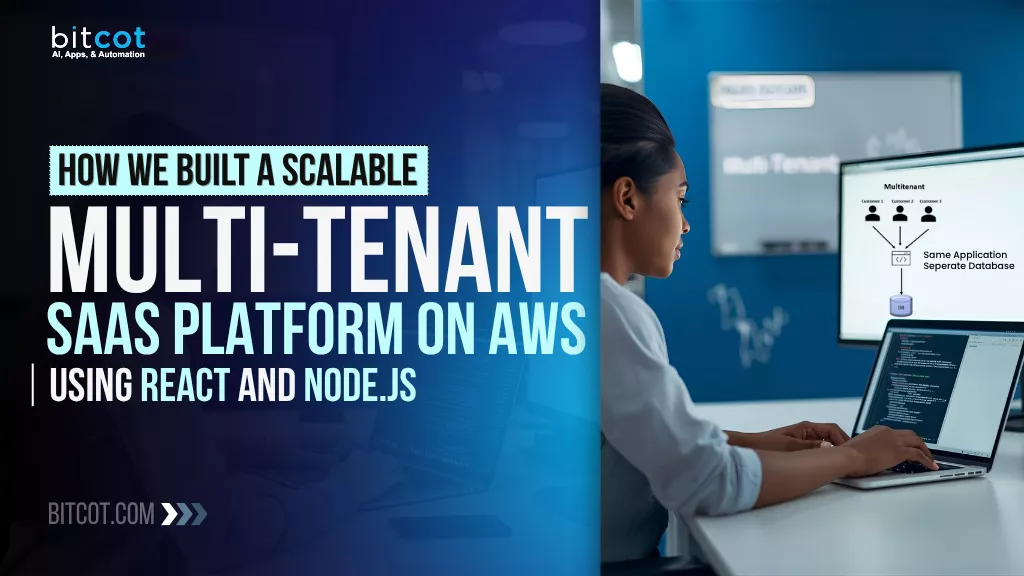
Your development needs are evolving across every corner of the business: internal tools, customer apps, operational workflows, and data dashboards, all demanding to be built faster than ever.
But when your teams are split between low-code platforms and traditional engineering, every project starts with friction. Developers worry about scale and maintainability. Business teams struggle with platform limits. And leadership waits while work gets stuck between two worlds.
Sound familiar?
Today’s products require speed and robustness, experimentation, and engineering discipline. When your tools and teams operate in silos, you slow down innovation and increase technical debt.
In this post, we’ll break down the shift happening right now: the rise of the hybrid development model, where low-code and pro-code work together instead of competing.
You’ll see practical examples, emerging patterns, and a straightforward framework you can use to decide what to build where.
Ask yourself:
- How many projects are delayed waiting for engineering bandwidth?
- How many prototypes never scale because the platform hits a wall?
- You’ve seen these issues, but where are you today in solving them?
Whether you’re a CTO, product manager, or a non-technical leader driving digital transformation, this challenge is real. Every stalled project is a missed chance to innovate faster.
Hybrid development changes that. It blends rapid low-code creation with the power and flexibility of pro-code engineering, letting teams deliver quickly without sacrificing quality.
Bitcot helps companies make that shift. We build integrated hybrid systems that empower business users, support engineering teams, and accelerate product delivery.
The future of software development is already here. Are you ready to build smarter and faster in 2026?
What are Low-Code and Pro-Code?
Before diving into a comparison, it’s essential to understand the fundamental difference between these two approaches to software development.
Essentially, they represent two ends of the development spectrum, one prioritizing speed and visual tools, the other prioritizing flexibility and granular control.
Low-Code Development
Low-Code is an approach to building applications that minimizes (or even eliminates) the need for traditional, hand-coded programming. It’s often compared to building with digital LEGO blocks.
- Visual Interface: Developers use a graphical user interface (GUI) with drag-and-drop components, visual modeling tools, and pre-built templates to assemble an application.
- Minimal Coding: The platform automatically generates the underlying code. The “low” in low-code means you may still need to write small amounts of code for complex integrations or specific business logic, but the heavy lifting is done visually.
- Core Benefit: Speed and Accessibility. It drastically accelerates development time and makes application building accessible to a wider audience, including citizen developers (non-professional programmers in a business role).
Pro-Code Development
Pro-Code (or Traditional Coding) is the conventional method of software development where professional developers manually write and maintain every line of source code in a programming language (like Python, Java, JavaScript, etc.).
- Text-Based Interface: Development occurs within a text editor or an Integrated Development Environment (IDE).
- Total Control: Developers have absolute control over every detail of the application’s architecture, functionality, security, and performance.
- Core Benefit: Flexibility and Customization. It allows for the creation of highly complex, specialized, and unique applications that require deep integration, custom algorithms, or specialized hardware/software interaction.
The real power comes when they’re used together, combining rapid iteration with engineering-grade reliability. That’s the hybrid development model, and it’s becoming the default for modern companies.
Key Features of Low-Code and Pro-Code
While Low-Code and Pro-Code both result in functional software, their underlying mechanics, required expertise, and the end product’s characteristics are vastly different.
Here is a look at the defining features of each development model.
Low-Code: The Speed and Accessibility Toolset
Low-Code platforms are defined by features designed to maximize development speed and democratize the creation process.
- Visual Development & Drag-and-Drop: The most defining feature. Developers build applications by visually arranging pre-built components (buttons, forms, data tables, workflows) on a canvas, drastically reducing the need to write front-end or business logic code manually.
- Pre-built Components & Templates: Platforms provide libraries of reusable modules, widgets, and full-application templates (e.g., Expense Report, CRM) that can be instantly deployed and customized. This eliminates repetitive tasks and ensures consistency.
- Built-in Integration: Low-Code platforms come with native connectors and pre-configured APIs for common services (like Salesforce, SAP, or common databases), simplifying the process of connecting the new app to existing enterprise systems.
- Rapid Deployment: Often featuring one-click deployment, low-code abstracts away the complex and time-consuming processes of configuring servers, containers, and deployment pipelines, allowing apps to be live much faster.
- Citizen Developer Focus: The tools are intuitive enough to be used by citizen developers, business users who are not professional programmers but have strong domain knowledge.
Pro-Code: The Control and Customization Toolset
Pro-Code is characterized by its reliance on core programming languages and frameworks, offering deep control and maximum flexibility.
- Source Code Ownership & Control: Developers write every line of code, giving them absolute control over the application’s entire architecture, logic, and look and feel. The business owns the intellectual property of the custom code.
- Unmatched Flexibility and Customization: Developers can implement highly complex or unique algorithms, interact directly with specialized hardware, or integrate with legacy systems without pre-built connectors. The only limit is the developer’s skill.
- Granular Performance Optimization: Because the code is hand-written, professional developers can fine-tune every layer (database queries, rendering speed, memory use) to achieve peak performance and efficiency tailored to specific, demanding requirements.
- Advanced Security and Compliance: Pro-Code allows for the implementation of custom security protocols and the meticulous adherence to industry-specific regulatory compliance (e.g., HIPAA, GDPR) at a granular level, which is critical for mission-critical systems.
- Framework and Language Agnostic: Development teams are free to choose the best-suited language and framework (e.g., Python/Django, Java/Spring, JavaScript/React) for the specific project, rather than being limited to a single vendor’s platform.
| Feature | Low-Code Development | Pro-Code Development |
| Development Style | Visual, Model-Driven (Drag-and-Drop) | Text-Based, Code-Driven (IDE) |
| Required Skill | Minimal to Moderate coding knowledge | Specialized expertise (e.g., Python, Java) |
| Customization | Good, but limited by platform capabilities | Maximal, unlimited flexibility |
| Speed/Time-to-Market | Fastest (Rapid Prototyping) | Slower (requires manual coding, testing) |
| Platform Lock-in | High (dependent on the vendor’s platform) | Low (code is typically portable) |
| Best For | Business process apps, MVPs, and Internal tools | Unique/Complex systems, Core IP, High-scale consumer apps |
Low-Code vs Pro-Code: Key Differences & Comparison
Understanding the difference between low-code and pro-code is essential for teams deciding how to build software in 2026. Both approaches solve the same problem, creating applications, but they do it in completely different ways.
The contrasts affect how ideas are executed, how fast teams can deliver, and how flexible a system becomes over time.
Below is a detailed comparison of the core differences that define low-code vs pro-code in real-world development environments.
1. Development Approach
Low-code development is built around visual tools. You create applications by placing components on a canvas, configuring behavior through settings panels, and connecting workflows with simple drag-and-drop actions. The platform supplies the foundational structure, handles behind-the-scenes code generation, and guides you through the steps needed to assemble a working application. Modern rapid application development tools make this process faster and easier, helping teams build and launch solutions quickly.
Pro-code development follows the traditional model of writing software line by line. Developers choose languages, frameworks, and architecture patterns, then write the logic manually. Every layer, API calls, front-end components, backend services, data models, and state management are created intentionally through code. This provides full control, but requires deeper technical expertise.
2. Customization Capabilities
Low-code platforms offer customization through prebuilt components and editable properties. You can change layouts, adjust workflows, modify logic rules, and extend certain behaviors, but only within the boundaries the platform supports. The platform maintains the deeper structures of the application, ensuring consistency but also limiting how far you can push beyond its intended use.
Pro-code solutions offer unlimited customization. Developers can implement new design systems, build custom logic, create unique workflows, and tailor every detail to match the exact needs of the project. There are no built-in constraints; anything that can be expressed through code can be constructed. This makes it ideal for complex systems where non-standard behaviors are required.
3. Integration Flexibility
Low-code integrations rely on prebuilt connectors that simplify communication with popular tools, such as CRMs, ERPs, databases, cloud apps, and third-party services. You choose the integration, authenticate access, and map your fields, and the platform manages the underlying API interactions. For common tools, integration is almost instant, except for niche or highly specialized systems. Businesses using bubble app development services benefit from its easy visual tools and flexible integration options.
Pro-code integrations are fully manual and custom-defined. Developers write the API calls, manage authentication tokens, define data transformation logic, and control how external systems interact with the application. This allows integration with any service, modern or legacy, regardless of complexity. It also gives full control over performance, error handling, and data flow.
4. Speed of Development
Low-code speeds up development by automating foundational tasks. UI components, page templates, data bindings, workflow engines, and deployment pipelines come ready to use. You skip the setup stages and move directly into assembling features. This dramatically shortens build time, especially for internal tools, prototypes, and workflow-heavy applications where the patterns repeat across projects. Organizations now use AI tools with low-code platforms to automate repetitive tasks and improve decision-making.
Pro-code follows a slower but more granular development cycle. Every component must be designed, coded, tested, and optimized. The process takes longer because the application is being built from scratch. Even simple features require more time due to setup, review, debugging, and infrastructure decisions. The pace is deliberate, but the outcome is more flexible and long-lasting.
5. Maintenance & Governance
Low-code maintenance happens inside the platform’s ecosystem. Updates, security patches, version management, and compliance controls are handled by the platform provider. Teams use centralized dashboards to manage access, deployments, and changes. This built-in governance ensures consistency but ties the application’s lifecycle to the platform’s rules and limitations.
Pro-code maintenance is controlled entirely by the development and DevOps teams. They manage source control, automate deployments, enforce security policies, and update dependencies. Every part of the maintenance process is defined and executed internally. This gives greater autonomy but requires ongoing effort to keep the application stable and secure.
| Comparison Factor | Low-Code Development | Pro-Code Development |
| Development Speed | Significantly Faster (Weeks/Months). Uses visual builders and pre-built components to accelerate Time-to-Market (TTM). | Slower (Months/Years). Requires manual coding, configuration, and extensive testing from the ground up. |
| Customization & Flexibility | Moderate. Limited by the platform’s available components, connectors, and core architecture. | Maximal. Developers have full, granular control to build unique features, logic, and integrations. |
| Required Talent | Broader Access. Accessible to professional developers, junior developers, and citizen developers. | Specialized Talent. Requires highly skilled, experienced software engineers proficient in specific languages/frameworks. |
| Initial Cost | Lower. Fewer specialized developers are needed, and faster development cycles. Often involves a subscription/licensing fee. | Higher. Requires competitive salaries for skilled engineers and a longer development runway. |
| Complexity of Application | Simple to Moderate. Ideal for internal tools, process automation, simple forms, and departmental apps. | High to Extreme. Essential for core business systems, complex algorithms, high-scale consumer apps, and unique IP. |
| Scalability | Good, but Platform-Dependent. Scaling is handled by the vendor’s cloud infrastructure, which may have limits or specific cost implications. | Excellent. Scalability is managed and optimized manually by the development team, offering complete control over the architecture (e.g., Microservices). |
| Vendor Lock-In | High. The application is built and runs on the vendor’s proprietary platform, making migration difficult. | Low. Code is typically based on open standards and is portable across different cloud providers or internal servers. |
| Code Ownership | You own the application/data, but the underlying development IP belongs to the platform vendor. | You own 100% of the source code and intellectual property. |
Also Read: What Are Low-Code and No-Code Development Platforms? A Guide for Business Leaders
Final Verdict: Which Development Approach is Best for Your Business?
There is no single “correct” choice between low-code and pro-code. The best development approach depends on the type of applications you’re building, the complexity of your requirements, your team’s technical skills, and the speed at which your business needs to move.
Each method brings strengths that fit different scenarios, and understanding those strengths helps you decide where to invest your time and resources.
Low-code is best for businesses that need rapid delivery and predictable structure.
If your priority is speed, ease of iteration, and the ability to empower non-technical teams, low-code provides a clear advantage. It works especially well for internal tools, process automation, simple web applications, customer-facing forms, and workflows that follow repeatable patterns. Low-code helps businesses move fast without waiting for engineering bandwidth.
Pro-code is best for businesses that need deep customization and long-term scalability.
If your applications require unique logic, complex integrations, advanced performance tuning, or complete control over the system, pro-code is the stronger choice. It’s ideal for customer-facing products, competitive differentiators, enterprise systems, and any solution that must grow, evolve, or integrate deeply with your ecosystem.
But for most organizations, the real answer is a hybrid approach.
Low-code accelerates delivery. Pro-code ensures flexibility. Used together, they allow you to build fast without hitting a ceiling and innovate confidently without losing stability. This is why modern teams increasingly adopt a dual approach, using low-code for what it does well and relying on pro-code where complexity demands it.
The best approach is the one that aligns with your goals.
- If you need speed, start with low-code.
- If you need control, choose pro-code.
- If you need both, embrace hybrid development and design a workflow that blends rapid assembly with custom engineering where it matters most.
In 2026, the smartest businesses aren’t choosing sides; they’re choosing balance.
How to Adopt a Hybrid Development Model for Your Business
Adopting a hybrid development model, where low-code and pro-code work together, requires a structured approach.
Instead of treating both methods as separate tracks, businesses need a unified framework that decides what gets built where, who does the work, and how both systems integrate without conflict. The goal is to accelerate delivery while keeping full control over customization and scalability.
Below is a detailed, SEO-optimized guide to help your business transition into a successful hybrid development environment.
1. Assess Your Application Needs and Categorize Use Cases
The first step in adopting a hybrid model is understanding what types of applications your business requires. Not every system demands the flexibility of pro-code, and not every workflow can be fully handled by low-code.
Identify:
- Simple, repeatable workflows → Best for low-code
- Complex, customer-facing systems → Best for pro-code
- Apps that start simple but may evolve → Ideal hybrid candidates
This categorization helps you make clear, strategic decisions instead of guessing where each approach fits.
2. Define Clear Guidelines for Low-Code and Pro-Code Usage
A hybrid model works only when teams know exactly when to use each method. Create internal rules that determine the appropriate path based on:
- Complexity level
- Integration depth
- Security and compliance needs
- Data sensitivity
- Performance requirements
These guidelines prevent teams from misusing low-code for custom-heavy projects or over-engineering simple workflows with manual coding.
Hybrid development succeeds when business teams and developers work together instead of in isolated silos. Establish a process where:
- Business users prototype workflows and forms using low-code
- Developers extend, enhance, or replace components with custom code
- Both groups collaborate through shared documentation and review cycles
This workflow accelerates delivery while ensuring technical accuracy and long-term scalability.
4. Integrate Low-Code Platforms With Your Existing Tech Stack
A hybrid model is only effective when low-code apps can connect seamlessly with your core systems. Choose platforms that support:
- API integration
- Custom code extensions
- Database connectors
- Authentication and security integration
- DevOps and CI/CD pipelines
This ensures that low-code output doesn’t become disconnected “shadow IT,” but instead fits neatly into your architecture.
5. Train Teams to Work Within a Unified Development Culture
Hybrid adoption also requires a mindset shift. Train teams so they understand both sides:
- Business teams learn basic concepts of data structure, logic flow, and system rules
- Developers understand low-code capabilities and how to extend them effectively
This alignment helps avoid friction, speeds up reviews, and ensures both groups are solving problems with the same perspective.
6. Start Small and Scale Gradually
Begin with one or two pilot projects. Use them to:
- Test your hybrid workflow
- Identify integration issues
- Gather feedback from business users and developers
- Document best practices
- Establish a long-term roadmap
Scaling becomes easier once you have a proven template for hybrid delivery.
Adopting a hybrid development model allows your business to combine the speed of low-code with the flexibility of pro-code. With the right structure, tools, and collaboration model, it becomes a powerful strategy for building software that meets both immediate needs and long-term goals.
Partner with Bitcot to Build Your Custom Low-Code/Pro-Code Solution
Partnering with the right development team is the key to unlocking the full potential of a hybrid development model. Bitcot helps businesses combine low-code speed with pro-code flexibility, creating solutions that deliver immediate value while supporting long-term growth. Here’s how Bitcot helps you build the perfect hybrid system for 2026 and beyond:
- End-to-end hybrid development expertise: Bitcot uses low-code platforms for rapid delivery while applying pro-code engineering for advanced customization. This gives your business faster build times, stronger architecture, and applications that can scale without limitations. Every project is designed to fit your goals, not forced into a single approach.
- Custom integrations that connect your tech ecosystem: Bitcot ensures your low-code and pro-code components work seamlessly with your existing systems. We build secure integrations for CRMs, ERPs, databases, legacy software, APIs, and internal tools. Your applications operate as one connected ecosystem instead of disconnected tools.
- Future-ready architecture designed for growth: Every hybrid solution we create is built to evolve. Bitcot ensures your applications handle increasing traffic, adapt to new features, and follow strong standards for performance and security. You get long-term scalability instead of short-term workarounds.
- Collaboration that fits your team’s workflow: Bitcot aligns the hybrid development process with your internal teams. We help you map your use cases, define when to use low-code or pro-code, and create a collaborative workflow between business users and developers. This eliminates bottlenecks and accelerates delivery across the organization.
- Ongoing support, optimization, and maintenance: Bitcot provides continuous support after launch to keep your hybrid applications running smoothly. This includes performance monitoring, security updates, feature enhancements, bug fixes, and platform improvements. Your systems stay modern, reliable, and ready for future demands.
Partnering with Bitcot gives you the best of both worlds: low-code agility and pro-code power, delivered through a proven development framework that accelerates innovation. If you’re ready to modernize your digital ecosystem and build smarter, faster, and more scalable applications, Bitcot is ready to help.
To Wrap Up
At the end of the day, choosing between low-code and pro-code isn’t really about picking a winner; it’s about finding the balance that actually works for your business. Some ideas need speed. Some ideas need depth. Most need a little of both.
And that’s exactly why the hybrid model is becoming the new normal.
If your team has ever felt torn between moving fast and building things the “right” way, a hybrid approach can give you the freedom to do both.
It opens the door for business users to build what they need without waiting on developers, while still giving your technical team the power to craft custom, scalable solutions when the project demands it. It’s flexible, practical, and genuinely empowering once everything clicks into place.
And you don’t have to navigate that shift by yourself.
Bitcot helps businesses bridge the gap between low-code and pro-code, so you get the best of both worlds without the learning curve or guesswork.
Whether you’re looking for custom low-code development services, custom pro-code development services, or a hybrid strategy that blends the two, our team is here to guide you from idea to launch.
If you’re ready to build faster, smarter, and with more confidence, Bitcot is here to help you take that next step.
Get in touch with our team.












